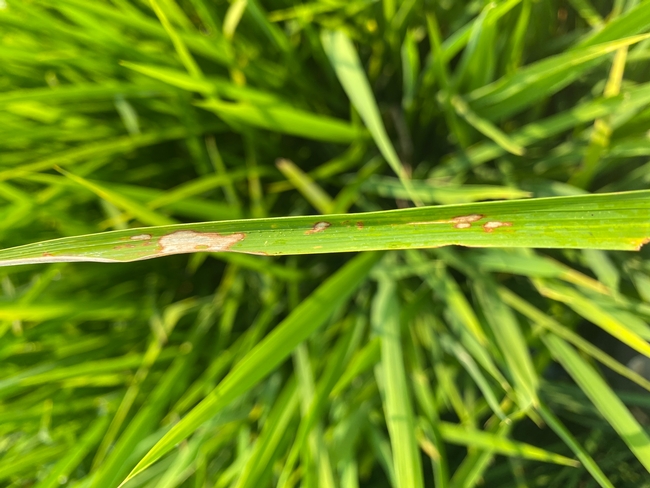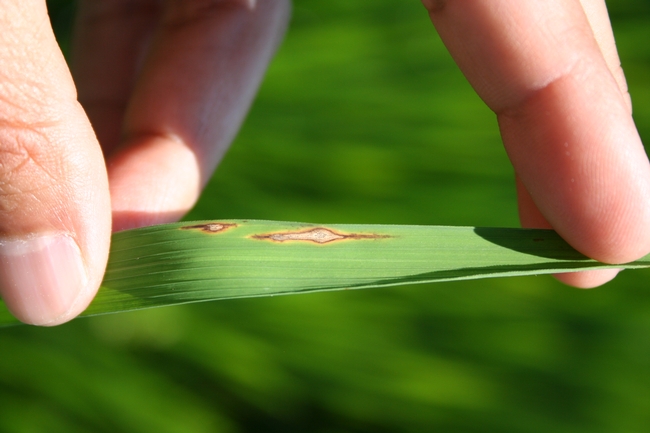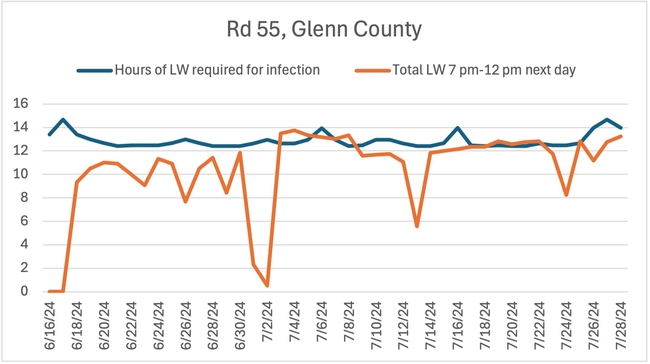In the last two weeks, I visited a couple of fields suspected of having blast. After looking at the symptoms and the distribution of the lesions in the field, we determined that the injury we were observing was most likely due to herbicide burn. When blast lesions coalesce, they can look a lot like herbicide burn, but with blast you will find some of the typical diamond shape lesions. Also, when blast results in burned holes, you will find a lot of blast lesions around the hole that decrease in density as you move away from the hole.
|
Herbicide burn that can be confused with blast |
Typical blast diamond shaped lesions |
I have not seen blast lesions this year yet. Looking at leaf wetness and temperature at the field level, we had some good conditions for blast around July 20. This is only an approximation and does not necessarily mean that we will see blast. Remember that two more things are needed to see infections: a susceptible host and the pathogen. Most of our varieties are susceptible, with only M-210 being resistant. At this point we do not have a way to monitor for the presence of the pathogen in the Valley other than by detecting infected fields.
Hours of leaf wetness (LW) required for infection (blue line) and total hours of leaf wetness (orage line). When the orange line intercepts or is higher than the blue, there is enough hours of leaf wetness for blast infection.
I'll keep monitoring and let you know if I see blast in the field.


